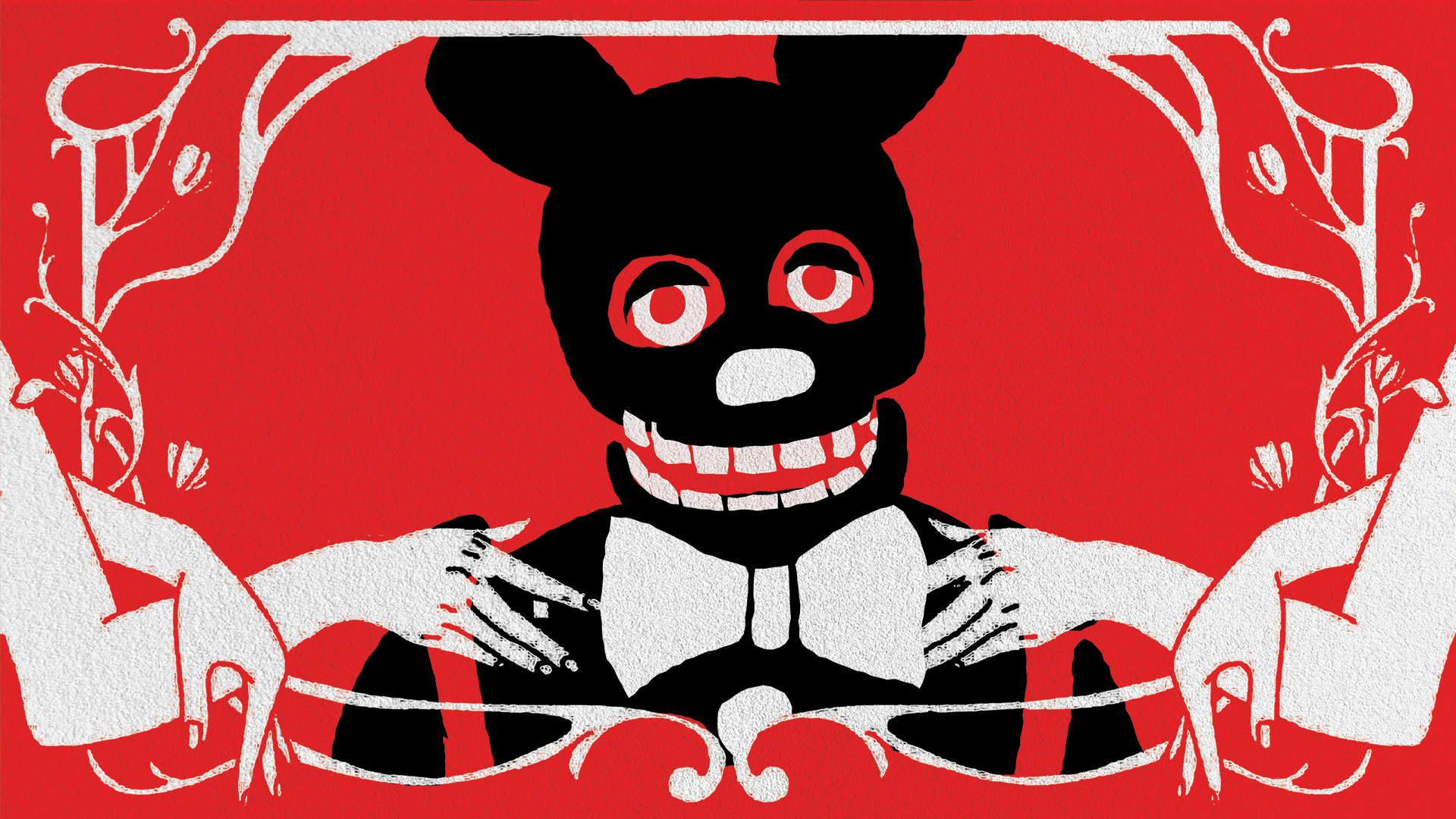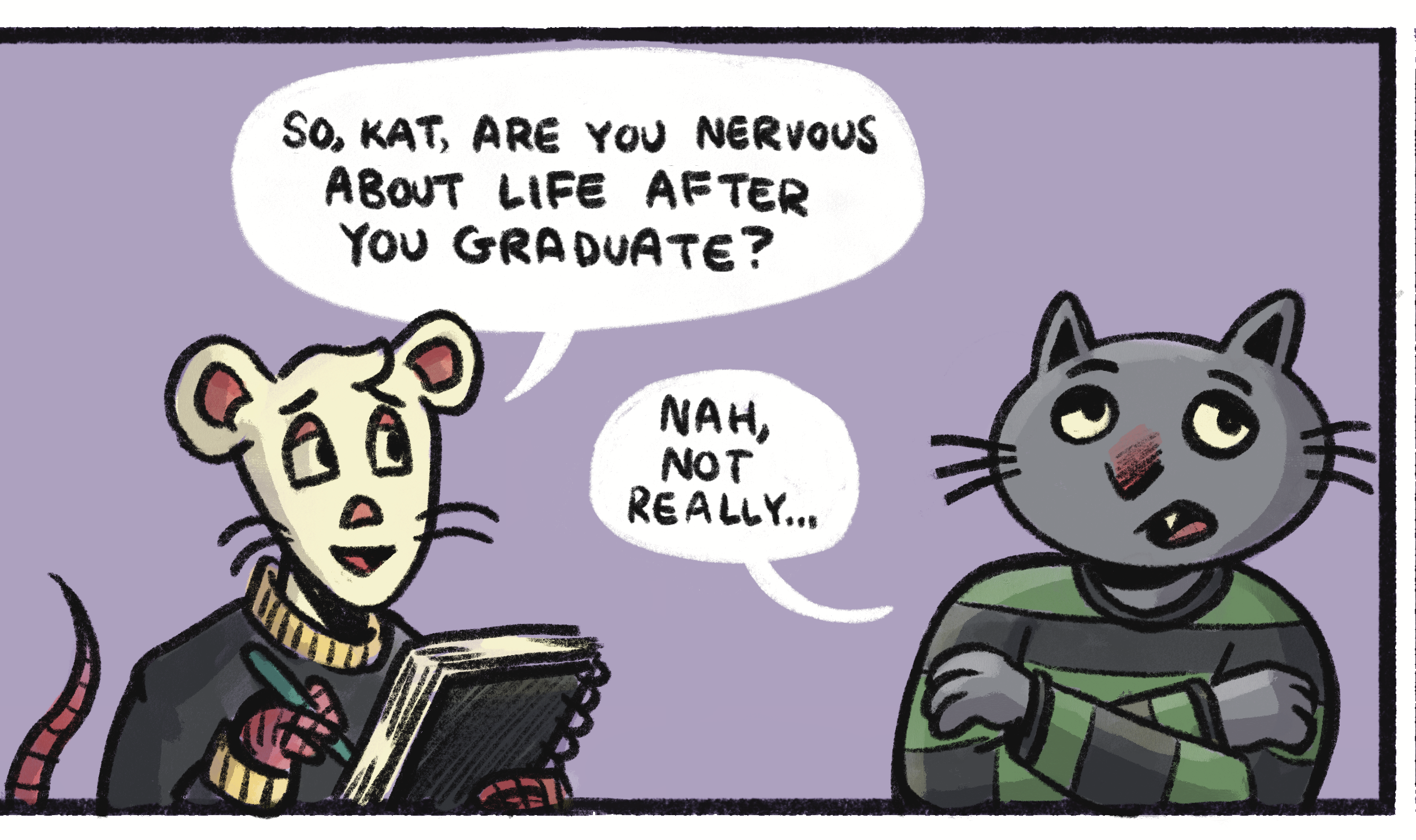
Who wouldn’t want Chuck E. Cheese mascot characters to become ‘Saw’-style sentient killers with the corpses of murdered children stuffed inside their Frankenstein bodies?
“Five Nights at Freddy’s,” otherwise known as “FNAF,” is an indie-horror-game-darling turned never-ending franchise. Created by Scott Cawthon in 2014, the series, for the most part, has gamers play as a security guard in a run-down parody of a Chuck E. Cheese restaurant trying to survive a week of the night shift while the animatronics hunt you down.
The real monster of “FNAF” is not a haunted animatronic, nor the child-murdering series’ antagonist, William Afton. The real monster is the impossible jigsaw puzzle of a timeline that fans to this day are trying to solve.
In 2014, fan culture around the game exploded thanks to YouTube Let’s Plays, a common style of video playing through a video game, and children, ourselves included, with unchecked access to the internet. YouTube Let’s Player Markiplier is the icon of “FNAF” fan culture, as his videos were the introduction to the “FNAF” universe for a large number of the games’ fans. It was a symbiotic relationship between Cawthon and the fandom: Cawthon got more opportunities to make his games, and many fans got their first taste of fandom, game lore, and online community.
Being a “FNAF” fan from the beginning meant spending nine years running through a neverending labyrinth of lore all leading to the same locked door. As the fandom and games grew, so too did the series’ hidden narrative. There is no better representation of the fan base and its desire for a more explicit narrative than YouTuber MatPat’s channel The Game Theorists, where MatPat uploaded many videos deep-diving into various “FNAF” theories.
Less than a year after the first game’s release, a “FNAF” movie was announced as early as April 7, 2015. 11 video games, 32 (give or take) books, and nine years later, “Five Nights at Freddy’s” the movie premiered in theaters in November 2023, drawing in audiences with promises of answers to their lore-based questions, child corpses, and a meme-able moment or two.
“Five Nights at Freddy’s” the movie offers a snapshot into the “FNAF” universe for the average movie-goer while sprinkling in thoughtful Easter eggs for long-time fans. Some of the easter eggs include a cameo from MatPat, a reference to the fan-made character Sparky the Dog, and the inclusion of a popular fan-made song for the credits sequence.
The basic premise of the movie follows Mike Schmidt (played by Josh Hutcherson and not to be confused with Michael from the games) as he gets a nighttime security guard job at Freddy Fazbear’s Pizzeria to support himself and his kid sister Abby (Piper Rubio).
But all is not as it seems — Mike is haunted by the memory of his little brother’s disappearance while he is simultaneously being surrounded by literal haunted animatronics.
His sister Abby quickly falls into the creepy-child-who-talks-to-ghosts horror trope. Police officer Vanessa Shelley (Elizabeth Lail) acts almost as a voice of reason before the final reveal, and rounding out the cast is the delightfully unhinged Matthew Lillard who plays Mike’s career-advisor-turned-worst-nightmare.
The movie is, for the fandom, an emblem (or a Freddy’s-certified security badge) of how far this series has come — moving from the indie-game sphere and the world of YouTube to mainstream cinema.
For everyone else? The “FNAF” movie sits next to “Megan” and “Chucky” on the shelf of child-toy horror. It’s somewhat generic without the games holding it up, but the film is still a fun ride for unfamiliar viewers.
The animatronics themselves are the most impressive part of the film. Made by the Jim Henson company, the mascots are part animatronic and part puppet contraptions. These terrifying mascots that are stuffed with rotting corpses somehow manage to come across as cute and childlike at times, reminding you of their tragic origins as characters. What really sells the animatronics as characters is that they are entirely practical effects that are brought to life by puppeteers.
The masterful puppeteering is what the apex of the film hinges on, as the final reveal includes a new animatronic — far more imposing than the others.
The film’s cinematography is oddly compelling for a horror film in this context and speaks to the level of care that went into it. The same could be said for the film’s score, which was fantastic, and set the perfect eerie child-murdering tone. Arcade game-style animation and childlike drawings are littered throughout the film and reinforce the original game series’ style within the movie.
The “FNAF” movie captured the ghosts of our generation’s childhood selves. Theaters were packed with children, teens, and young adults coming together to see the manifestations of their “FNAF” obsessions. The “FNAF” movie creates a whole new generation of “FNAF” fans yet to emerge. Though the fanbase might change, the “Five Nights at Freddy’s” franchise will always come back.







